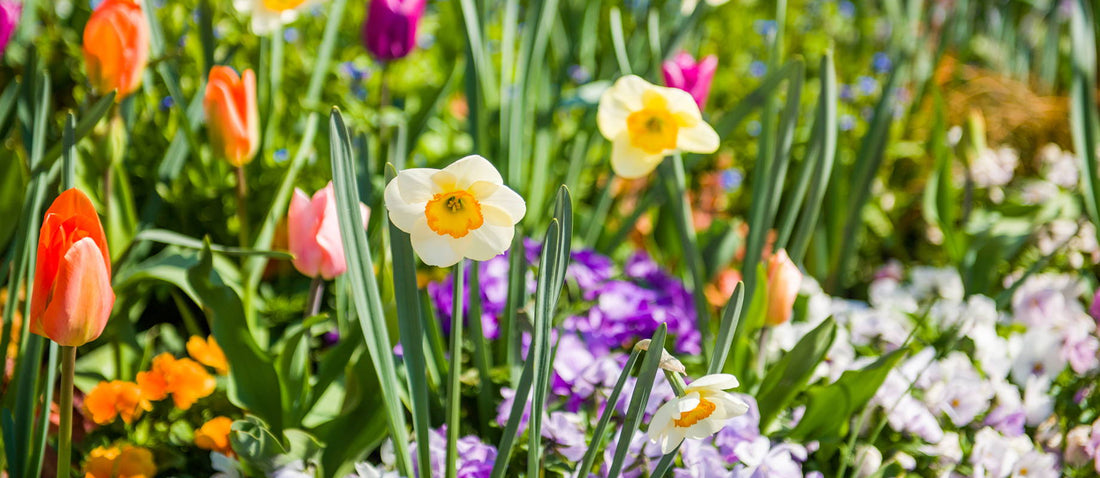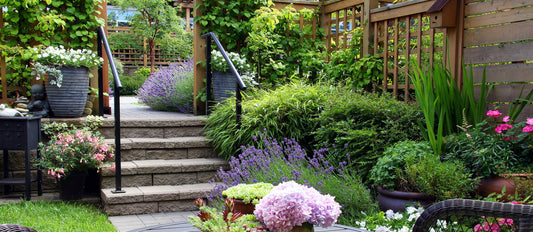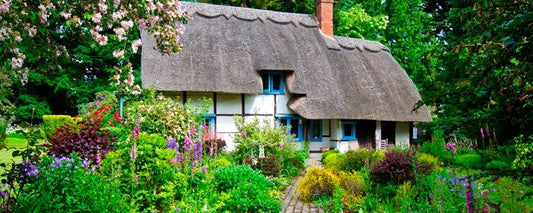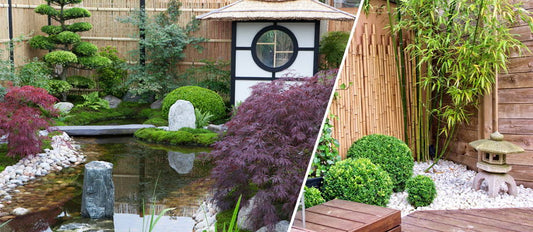Yes, spring is just around the corner! Just a little while longer and we'll be able to enjoy the long-awaited spring sunshine. Where is the best place to enjoy the sun? In your own garden or on your own balcony, of course! Until the sun arrives, you can tidy up your outdoor space and prepare it for spring. Then you can get outside as soon as the good weather arrives. But... what kind of jobs should you put on your to do-list?
Keep or pull up?
Before you get stuck in, it's good to know which plants will come back to life and which ones won't. Right now, most plants look like they've had it, but appearances can be deceptive! With a bit of love and a few hours of sunshine, they'll soon be looking great again!
Perennials can stay. They grow and bloom year after year. In fact, they come back stronger each year. Just think of hydrangeas, rhododendrons and roses. Our perennials have already had at least one year to mature. This means that the plant has had over a year to get used to its environment, the soil and the sunlight. The plant you receive will therefore be strong with firm roots and will quickly feel at home. Our peonies are matured even longer. They consequently produce more and very large flowers.
Would you like to buy new perennials? Take a look at our organic plants. Better for insects, better for nature.
Did you plant flower bulbs in the autumn? Make sure that you don't forget where they are. Spring bloomers are now starting to come up. And, of course, you don't want to disturb their development. It would be a shame if all your hard work went to waste. Be careful not to accidentally step on the ground where you planted them or to destroy them with your shovel. Do the plants still have leaves on them? Remove these carefully. Leaves block out the sunlight and sunlight is exactly what the bulbs need right now.
These plants need to be pulled up
Perennials can stay, but it is important to cut off the old, dead parts.
Annuals and annual flower bulbs should be removed from the ground, too. These only blossom for one season. To make room for the new summer bulbs, remove the bulbs that have already bloomed. If the ground is really wet, it's a good idea to dig up the bulbs in good time. Otherwise they may rot. Once annuals have finished blossoming in autumn, you can remove them. But you can also wait until spring before doing so. If you choose to do the latter, it is very important to dig out the roots, too, to ensure that they do not rot.
Pruning means blooming
Plants, trees and shrubs really enjoy being pruned. They stay healthy, and you're rewarded with beautiful flowers.
Most summer bloomers must be pruned in the spring. This is often in the period from February to April. Wondering how to prune your garden plants? Read all about it here.
What you need to tidy up
It's handy to have enough garden tools on hand so you're well-prepared to start cleaning up your garden. What you absolutely need:
- Gardening gloves make sure that your hands and nails don't end up covered in dirt. They also provide a useful anti-slip function.
- A trowel makes digging very easy. Just be careful not to damage any bulbs or roots.
- The pruning season also starts from February/March for a large number of garden plants, trees and shrubs. Will you choose simple secateurs? Or do you need an automatic hedge cutter?
- Get special flower bulb potting soil to fill in the holes in the garden and freshen up the soil. That way you'll be sure that all the bulbs, tubers and roots in the ground get adequate nutrients and are well buried in the ground.
- A rake or handheld rake is a great tool for gathering up all the leaves.
- Make sure that you have enough popup garden waste bags. They make it easy to throw garden scraps into the biodegradable waste bin. Or you can make your own compost!
You've cleaned up your garden — now what?
Well done, your outdoor space is now ready for spring! Now you can get to work with new plants and trees, and don't forget summer bulbs! As soon as the ground is frost-free, you can start planting. It's a good idea to think about which greenery and bulbs you want to plant, where they will be and how much space you want to fill.
Tip: Do you want to do something completely different with your garden this year? Draw up a garden plan. That way, you'll know exactly what will go where and you can easily play about with heights and colours.




